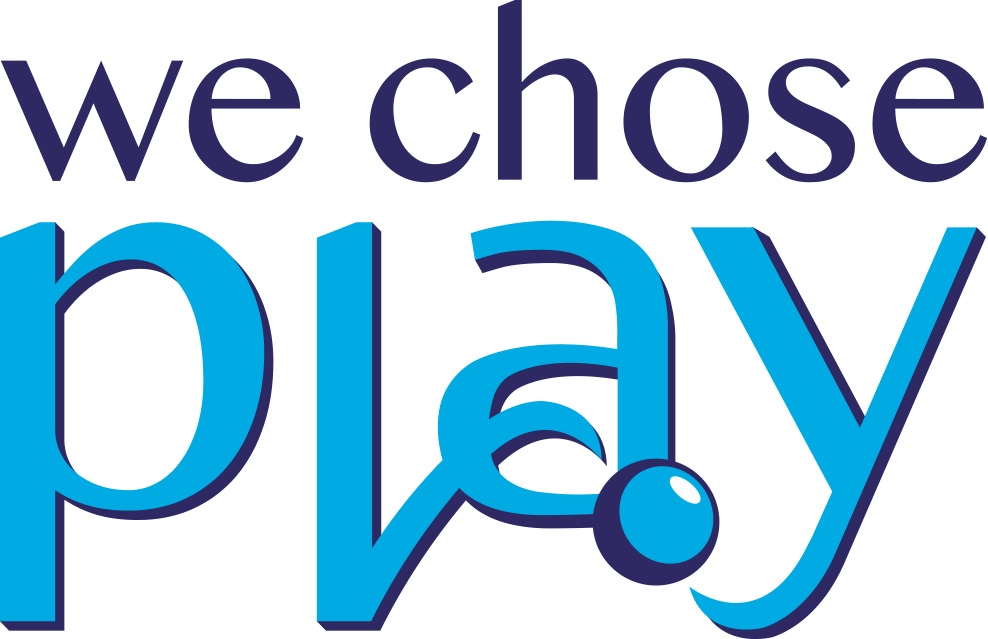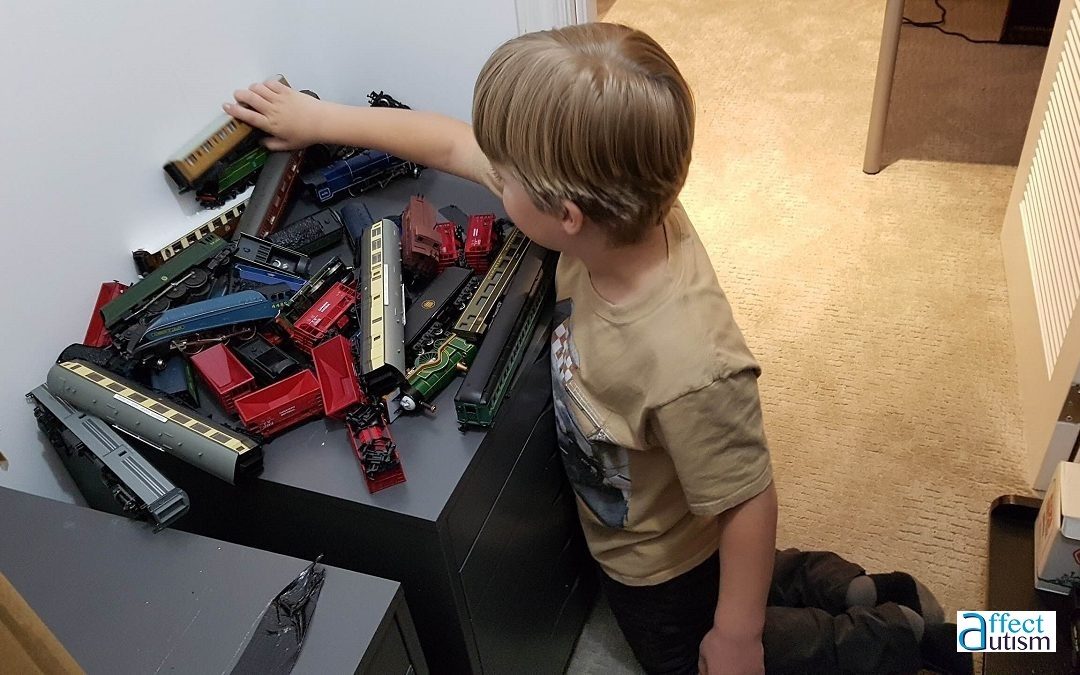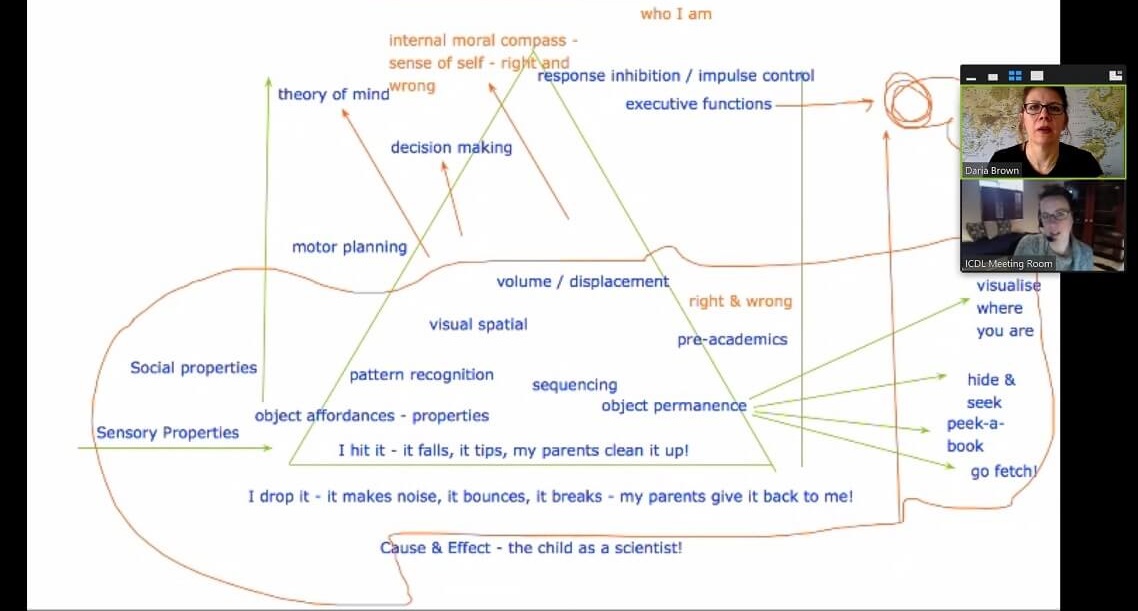Key Takeaways PDF for Members
We will never share your e-mail.
Success!
Virginia Spielmann returns this week to discuss cause-and-effect play. Virginia is a Developmental, Individual differences, Relationship-based (DIR) Expert Training Leader, a clinical consultant for the Interdisciplinary Council on Development and Learning (ICDL), an occupational therapist currently working on her registration in the state of Colorado where she is now the Associate Director at the Star Institute for Sensory Processing Disorders, and a PhD candidate in Infant and Early Childhood Development at Fielding Graduate University.
Cause-and-effect play with Virginia Spielmann
Audio Player- Slowly pushing a can of Dada’s beer along the table until it gets to the edge and spills all over the floor
- Putting little figurines into Dada’s morning coffee, his own glass of water, or crayons at a restaurant into someone’s glass of water
- Throwing crayons across the restaurant
- Breaking crayons in half at the restaurant
- Knocking water or coffee over on the table at the restaurant
- Shoving crayons at the restaurant into hard-to-reach places
- Throwing all the toys behind the bed
- Burying objects under rice in a bowl
- Playing with a bowl of objects in the sink filling it up and pouring the water out
- Burying suction cup characters on the bathtub wall with soap bubbles and watching the bubbles glide downward
- Is it communication?
- Is it a sign of (dys)regulation?
- Is it a way of getting regulated?
In the same way Dada needs his coffee in the morning to alert himself, our son might be organizing himself by making discoveries about objects in his environment. This is really about letting go of our pre-conceived notions and expectations about what is functional or not, and actually being in the moment and attuning to our child to see what is going on with them.
Floortime ideas for cause-and-effect play
- Hand objects to my son to throw behind the bed and participate in this ‘experiment’ to support his query of seeing what object falls the quickest, what makes the funniest noise, what squishes, what bounces, etc.
- Put a baby bath next to the sink and knock different types of drinks into the bin, and put different lids on the containers
Our son’s impulsivity has decreased over time in his cause-and-effect play. Whereas he once would have impulsively knocked over a cup of water or coffee, the example I gave earlier was that he slowly, methodically, and patiently pushed the beer can along the table to the edge and paused before knocking it off the table, the whole while glancing at me to see my reaction. I also gave the example of how it moved from self-contained activities to social activities where he will hit or stomp on a foot to get a reaction out of somebody.
There is a development to cause-and-effect play. For example, Virginia points out that we are still learning about cause-and-effect in the social realm as adults when we determine how to interact with new people we meet. From sensory play to object permanence to pattern recognition and beyond, Virginia walks through so many stages of cause-and-effect play. She drew this diagram below and then elaborated on it while describing all of the development that happens from a child as a baby watching an object fall that (s)he knocked over through to theory of mind and more advanced developmental capacities such as playing with moral ideas of what is right and wrong (Click on each image to enlarge).
Virginia discusses how important it is to explore cause-and-effect relationships for development that occurs later on to be robust. Although our son has been in this stage of play for many years now, he has been developing capacities that will serve him going forward and rushing him will not benefit him. Please see the podcast with Dr. Gil Tippy about the pre-cursors to academics, Foundation Academics, for more on this topic.
Until next week… here’s to affecting autism through playful interactions!









